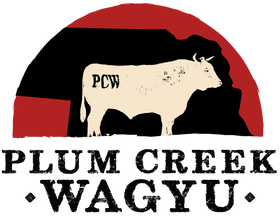The Wagyu Mythbusters: Separating Fact from Fiction
Introduction
Wagyu beef is surrounded by myths and misconceptions, from its origins to its grading and health benefits. Many believe that all Wagyu comes from Japan or that it's always exorbitantly priced. In this post, we’ll debunk the biggest Wagyu myths and set the record straight.
1. Myth: All Wagyu Beef Comes from Japan
Fact: While authentic Wagyu originated in Japan, high-quality Wagyu is also raised in the U.S., Australia, and other countries. American Wagyu, for instance, comes from Japanese Wagyu cattle crossbred with traditional American breeds, creating a unique but equally rich flavor profile.
2. Myth: Wagyu is Always Expensive
Fact: While A5 Japanese Wagyu can be costly, there are more affordable cuts and grades available. American Wagyu and different Wagyu hybrid cuts offer incredible quality at a lower price point, making it more accessible to a wider range of consumers.
3. Myth: More Marbling Means Better Wagyu
Fact: Marbling is a key characteristic of Wagyu, but higher marbling doesn’t always mean better taste. Some diners prefer slightly less marbled cuts for a more balanced texture and beefy flavor. The best cut depends on personal preference.
4. Myth: Wagyu is Unhealthy Due to Its Fat Content
Fact: Wagyu contains a high percentage of monounsaturated fats and omega-3s, which can be beneficial for heart health when consumed in moderation. Its unique fat composition makes it different from conventional beef.
5. Myth: You Must Cook Wagyu Like a Regular Steak
Fact: Wagyu’s high fat content means it requires different cooking techniques. Cooking it at lower temperatures and avoiding over-seasoning helps preserve its buttery texture and rich flavor.
6. Myth: Wagyu and Kobe Beef are the Same
Fact: Kobe beef is a specific type of Wagyu from the Hyogo Prefecture in Japan. While all Kobe is Wagyu, not all Wagyu is Kobe. The strict criteria for Kobe beef make it one of the most exclusive varieties in the world.
Conclusion
Understanding Wagyu beef beyond the myths helps consumers make informed choices. Whether you’re exploring different Wagyu origins or cooking it properly, knowing the facts ensures you get the best experience from this luxurious beef.
Related Posts
Sustainability in Wagyu Ranching: How Plum Creek Wagyu is Committed to the Environment
Explore how Plum Creek Wagyu is committed to sustainability with practices like rotational grazing, water conservation, humane treatment of cattle, and more. Learn about our efforts to produce high-quality beef while protecting the environment.
Wagyu Beef vs. Angus Beef: A Flavor Showdown
Discover the differences between Wagyu beef and Angus beef in this comprehensive showdown. Learn about flavor, texture, and the overall eating experience to determine which premium beef is right for you.
Wagyu Beef Recipes for Every Season: From Summer Grilling to Winter Braising
Explore seasonal Wagyu beef recipes perfect for any time of the year. From summer grilling to cozy winter braises, discover easy and delicious ways to incorporate premium Wagyu into your meals.
Health Benefits of Wagyu Beef: Why It's a Premium Choice
Discover the health benefits of Wagyu beef, from its heart-healthy monounsaturated fats to its higher levels of omega-3 fatty acids and CLA. Learn why Wagyu beef is a premium choice for those seeking a flavorful yet healthier alternative to traditional meats.
Pairing Wagyu Beef with Wines: A Guide to the Perfect Match
Discover expert tips on pairing Wagyu beef with the perfect wines. From Ribeye to Filet Mignon, explore the best wine matches to elevate your dining experience and make every bite of Wagyu beef unforgettable.
The History and Origins of Wagyu Beef: From Japan to Nebraska
Explore the rich history of Wagyu beef, tracing its origins from ancient Japan to the modern-day farms of Nebraska. Learn about the unique breeding practices and cultural significance of Wagyu, and discover how Plum Creek Wagyu brings this exceptional beef to your table.








